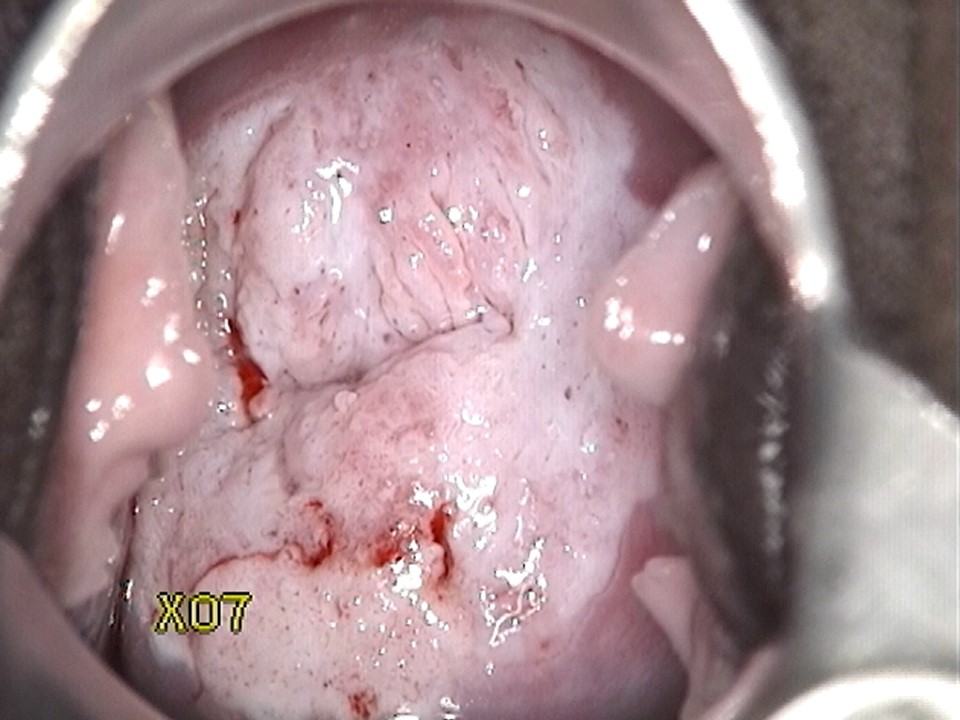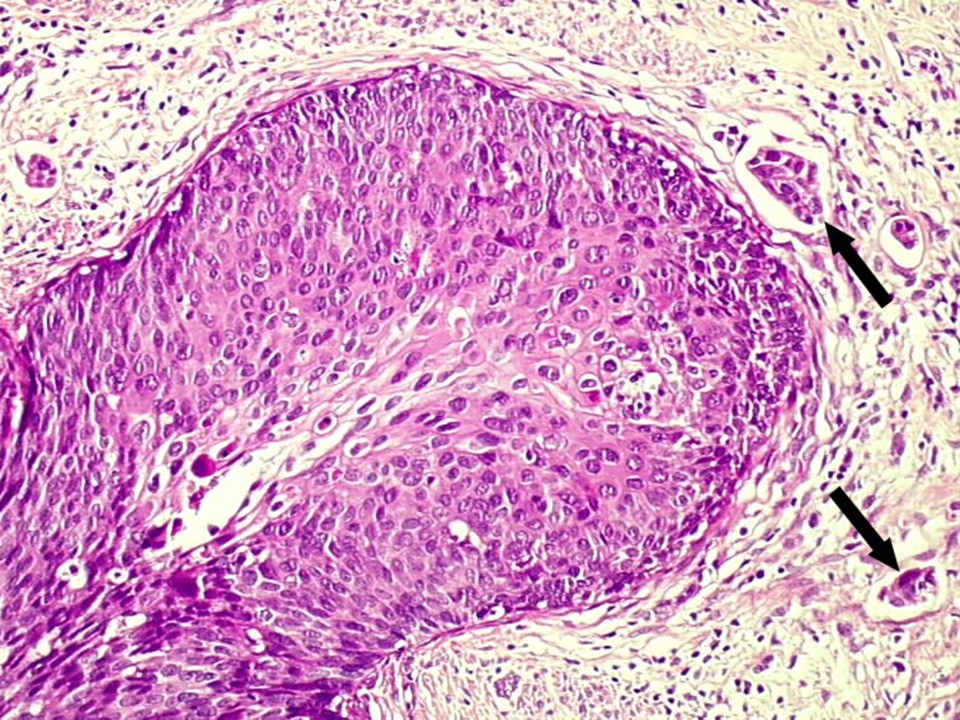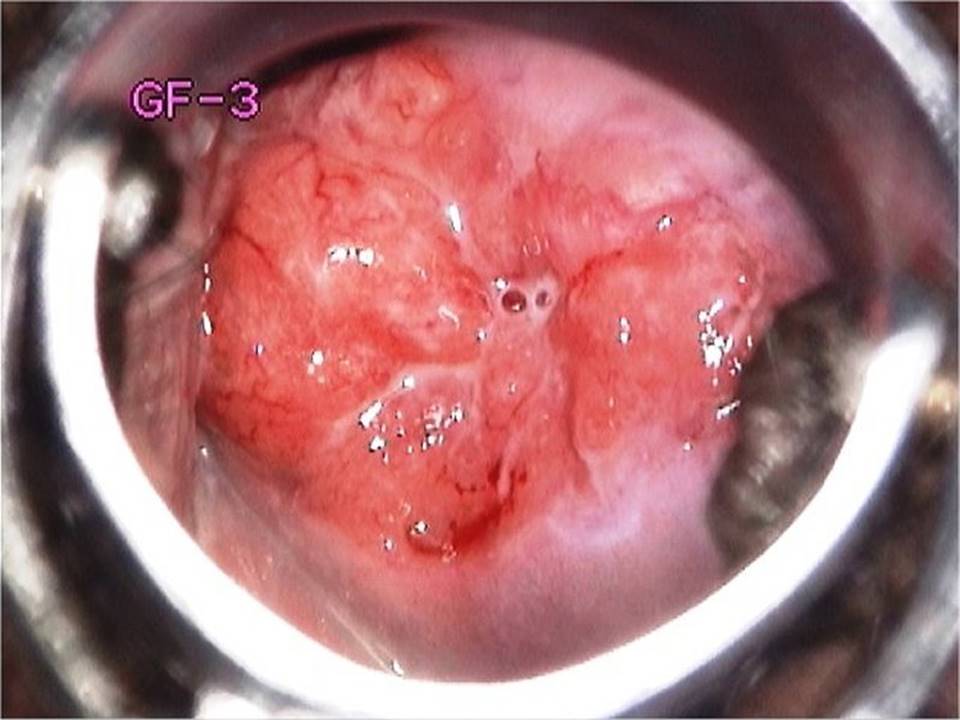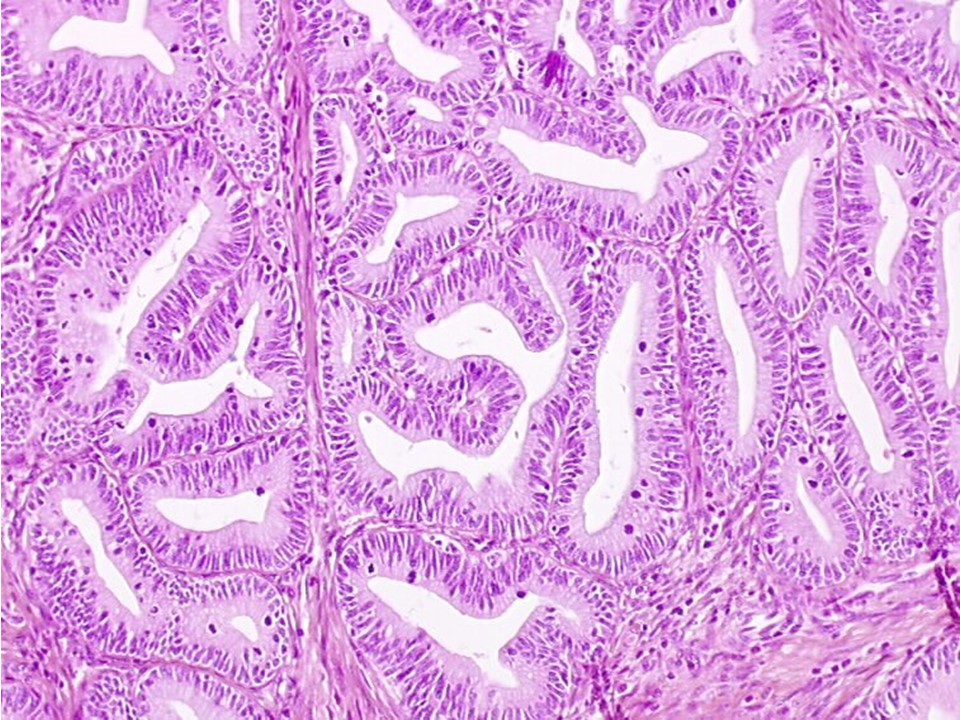Using Human Papillomavirus (HPV) detection tests for cervical cancer screening and managing HPV-positive women – a practical guide / Activity 3
Neoplastic changes of the cervical epithelium – Cervical cancers | Click on the pictures to magnify and display the legends |
In CIN and AIS, the disease is confined to the epithelium only. In contrast, in invasive cervical cancers, the proliferating abnormal epithelial cells invade into the cervical stroma initially and may later spread to distant organs, a phenomenon known as metastasis. Most cervical cancers (80–90%) originate from the squamous cells and are known as squamous cell carcinomas. Adenocarcinomas arise from the columnar cells and make up approximately 10–15% of cervical cancers. Depending on the extent of the disease, cervical cancers are staged into stages I (the earliest stage, with disease confined to the cervix only) to IV (most advanced disease, with metastasis to other organs).
Treatment of invasive cancer depends on the stage of the disease. Whereas early-stage cancer is treated with surgery only, more advanced cancer requires treatment with a combination of chemotherapy and radiation therapy. Treatment with surgery is simpler than treatment with radiation and chemotherapy, and patients have fewer complications and a much better quality of life. Unfortunately, in most low- and middle-income countries more than 80% of patients are diagnosed at a stage when surgery is no longer feasible. It is possible to detect the precancers more objectively when screening is done with an HPV test. The next section describes different HPV tests. |



